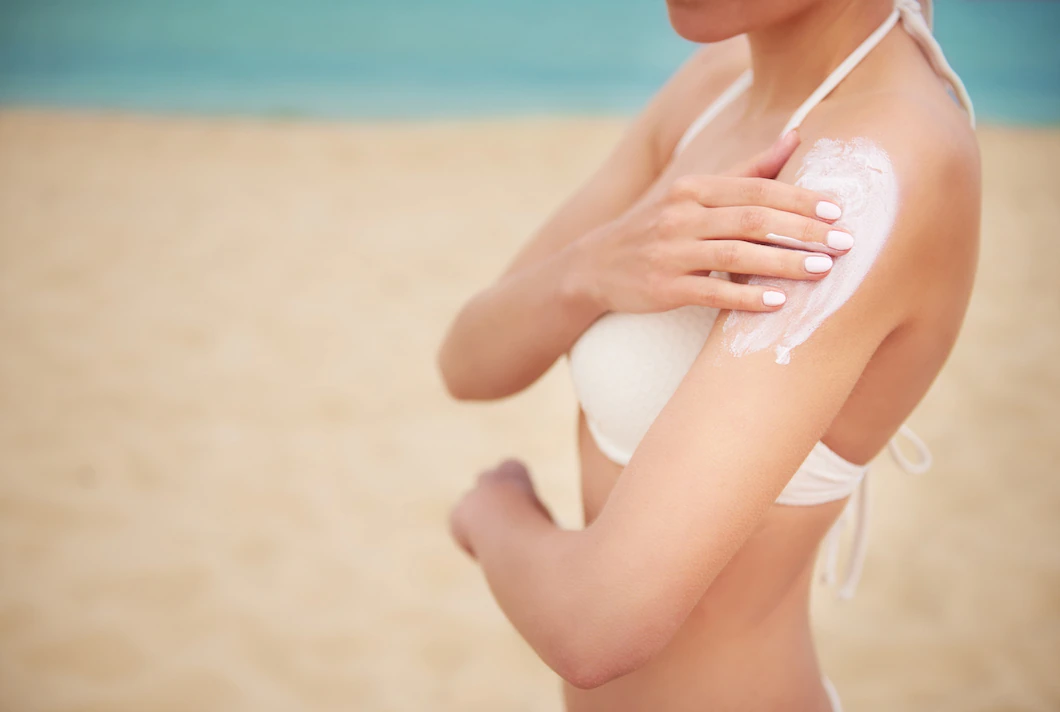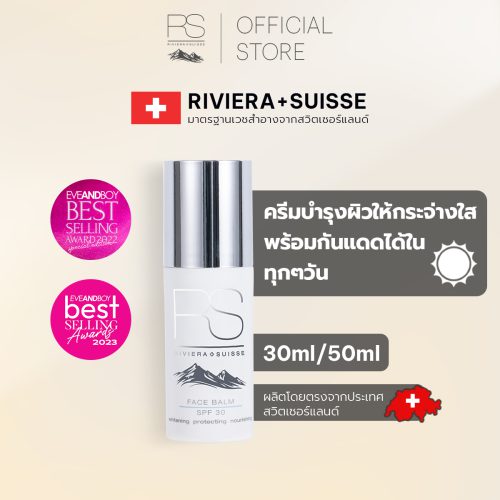It’s summer now, and many people will encounter strong and intense sunlight, especially during midday. One of the first skincare products that comes to mind must be “sunscreen,” which protects the face and body from dullness, sunburn, and skin cancer. When choosing sunscreen, people often assume that the higher the SPF, the better the sun protection, but this isn’t always true. Today, we’ll help everyone understand what SPF is and how to choose the right sunscreen for themselves. Let’s find out!
Understanding UV Rays: The Villains from the Sun
Overall, most people understand that UV rays cause our skin to darken and become dull. But actually, UV rays can be divided into two main types:
UVA Rays: These are the culprits that cause skin to wrinkle, sag, age prematurely, and increase the risk of skin cancer. This is because UVA rays can penetrate to the dermis layer, suppressing immunity and destroying collagen beneath our skin. They can also penetrate glass, so you should apply sunscreen even when indoors. Remember simply that UVA causes Aging.
UVB Rays: This type of radiation primarily harms the epidermis, leading to sunburn, darkening, dullness, melasma, freckles, and dark spots. UVB rays cannot penetrate glass. Remember simply that UVB causes Burning.
What Exactly is SPF?
SPF stands for Sun Protection Factor. It’s a value that indicates the effectiveness of a sunscreen only in protecting against UVB rays. SPF 1 represents the skin’s normal ability to withstand sunlight before burning. This means that if you apply sunscreen with SPF 30, your skin will tolerate the same intensity of sunlight for 30 times longer. For example, if your skin can normally withstand this intensity of sun for 10 minutes, applying SPF 30 sunscreen will allow your skin to tolerate the same intensity of sun for 300 minutes. If the sunlight is stronger, the time you can tolerate it will be less. But if the sun is weaker, the time your skin can tolerate it will increase. In summary, a higher SPF can extend the duration your skin can withstand the sun.
Since the SPF value only indicates the ability to protect against UVB rays, sunscreens have now been developed to also protect against UVA rays. There is a measurement standard to indicate the effectiveness of UVA protection called Persistent Pigment Darkening (PPD), and the value measured by this method is called PA, which stands for Protection Grade of UVA. It is divided into 4 levels: PA+, PA++, PA+++, and PA++++.
Is There a Big Difference Between SPF 30 vs SPF 50?
From what was mentioned above, it can be seen that if we use sunscreen with SPF 30, it can protect against UV rays for approximately 300 minutes, or about 5 to 5 and a half hours, which is sufficient for general daily use. The period when sunlight is strong and harmful to our skin is typically between 9:00 AM and 3:00 PM. However, if we need to face the sun all day, such as when going to the beach or out of town, we can use sunscreen with SPF 50 for longer UV protection.
Normally, SPF 30 is the most popular among various sunscreens and is recommended for all skin types. No sunscreen can block 100% of UV rays. SPF 15 can block 93% of UVB rays, SPF 30 can block 97% of UVB rays, and SPF 50 can block up to 98% of UVB rays. If you look closely, the difference between SPF 30 and SPF 50 is only a 1% increase in protection. This means that sunscreens with an SPF of 30 or higher are quite similar in their UV protection effectiveness. Therefore, we don’t always need to buy sunscreen with an SPF higher than 30.
Are There Any Downsides or Dangers to Using High SPF Sunscreens?
Many people who apply high SPF sunscreens often think that once applied, they can brave the sun without fear all day long. However, in reality, sunscreen cannot protect us with full effectiveness as indicated by the SPF value due to other external factors such as temperature, humidity, and movement during various activities. Therefore, if we have to be exposed to the sun for a long time, we should reapply sunscreen 2-3 hours after the first application. Nevertheless, after using sunscreen, we should thoroughly cleanse our face to remove the sunscreen and impurities, as they can cause clogging and lead to acne breakouts.
So, while protecting our skin from the sun, we should also nourish our skin to keep it healthy and clear of acne. Riviera Suisse has combined these two properties into one bottle: Riviera Suisse Face Balm SPF 30 PA+++, which can moisturize the face while protecting from the sun and is gentle on all skin types.
In Conclusion, How Should We Choose Sunscreen?
We can choose sunscreen with an SPF of 30 or 50, which is sufficient to protect our skin from the sun throughout the day. Additionally, we should choose sunscreens that are free of fragrances and alcohol, as these can cause skin irritation. For those with oily skin, we should choose lightweight, fast-absorbing sunscreens; otherwise, our face might end up looking greasy.






